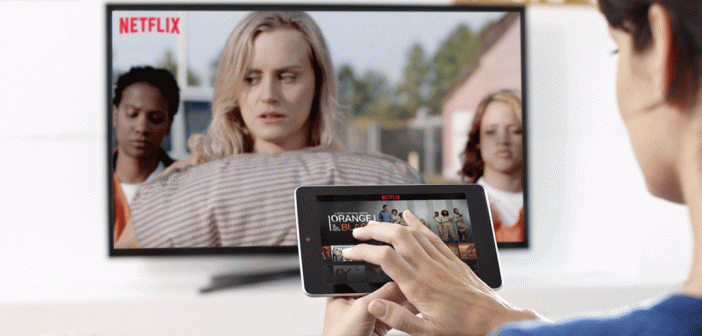Research shows mobile devices as most popular choices for watching OTT TV content
The standout CES 2016 trend towards multiscreen TV experiences is supported by new research, which finds that mobile devices are the most popular choices for watching paid OTT TV content. Altogether, 66% of consumers globally prefer to access internet TV via a mobile, tablet or laptop according to a new study from subscriber management for pay TV provider, Paywizard.
CES launches of 4K screens on mobile devices and debuts of new Airplay, Chromecast and Miracast enabled devices support research findings that younger audiences (18 to 34s) now use almost twice as many devices as over 55s to watch TV. The figure jumps to three times as many in the US, and therefore increasing demand for seamless switching between content across connected devices. This is according to a recent Research Now study, commissioned by Paywizard.
OTT services, and in particular subscription video-on- demand (SVOD) services such as Netflix, are proving most popular with the millennials (loosely defined to represent those born in the 1980s). Not only do 25 to 34 year olds form the largest group (28%) of existing OTT subscribers, but 40% said that they planned to sign up to an OTT service prior to Christmas 2015.
Bhavesh Vaghela, CMO at Paywizard, commented: “In December, over 50% of consumers worldwide planned to use OTT TV services such as Netflix, and this recent popularity surge – led by millennials – has altered day to day device usage. At CES we’ve seen companies like Samsung address this changing landscape, and so too must pay TV providers, by making sure that popular content is easily accessible via numerous platforms, without leading to fragmented consumer experiences. Responding to this trend will also be key to combating churn in the year ahead. The fact that different devices are favoured by different demographics shows the need to treat customers in different ways.
“Based on how they want to consume their entertainment, operators can employ sophisticated customer retention tactics that target specific persona profiles, from marketing to billing to personalising the user experience,” continued Vaghela.
The findings come from a global study which analysed how consumers in Australia, Brazil, Germany, Singapore, the UK and US, planned on watching TV in late December 2015, including which TV services they prefer and which devices they plan to use.
Other highlights from the research include that gamers like internet TV. Game console owners are the least likely to watch TV in general, however are the most likely consumer group to watch internet TV content at 89% and also the most likely to consider signing up to a new internet TV service
Also, US consumers are most likely to access TV in general via game consoles; compared to all other countries surveyed, US consumers are most likely to watch TV via a games console at 12% compared to the UK at 8%.
Meanwhile, younger audiences gravitate to mobile. The 18 to 24 year old group is most likely to watch TV on mobile (35%), whereas 25 to 34s are the most likely group to watch TV on tablets (32%).
However, while there is clearly a consumer demand for OTT services, it seems that not enough is being done to keep consumers attached to their services. Altogether, 33% of existing subscribers, and 56% of people that planned to sign up to OTT over the Xmas period, will cancel their subscription immediately or within six months of Christmas.
The main reason for cancelling, given by a quarter of both existing and planned subscribers, is that ‘it’s too expensive’. However, rich content is the primary reason that 54% could be persuaded to stay and existing subscribers, planning to stay for as long as a year, feel that their services do offer good value for money.





